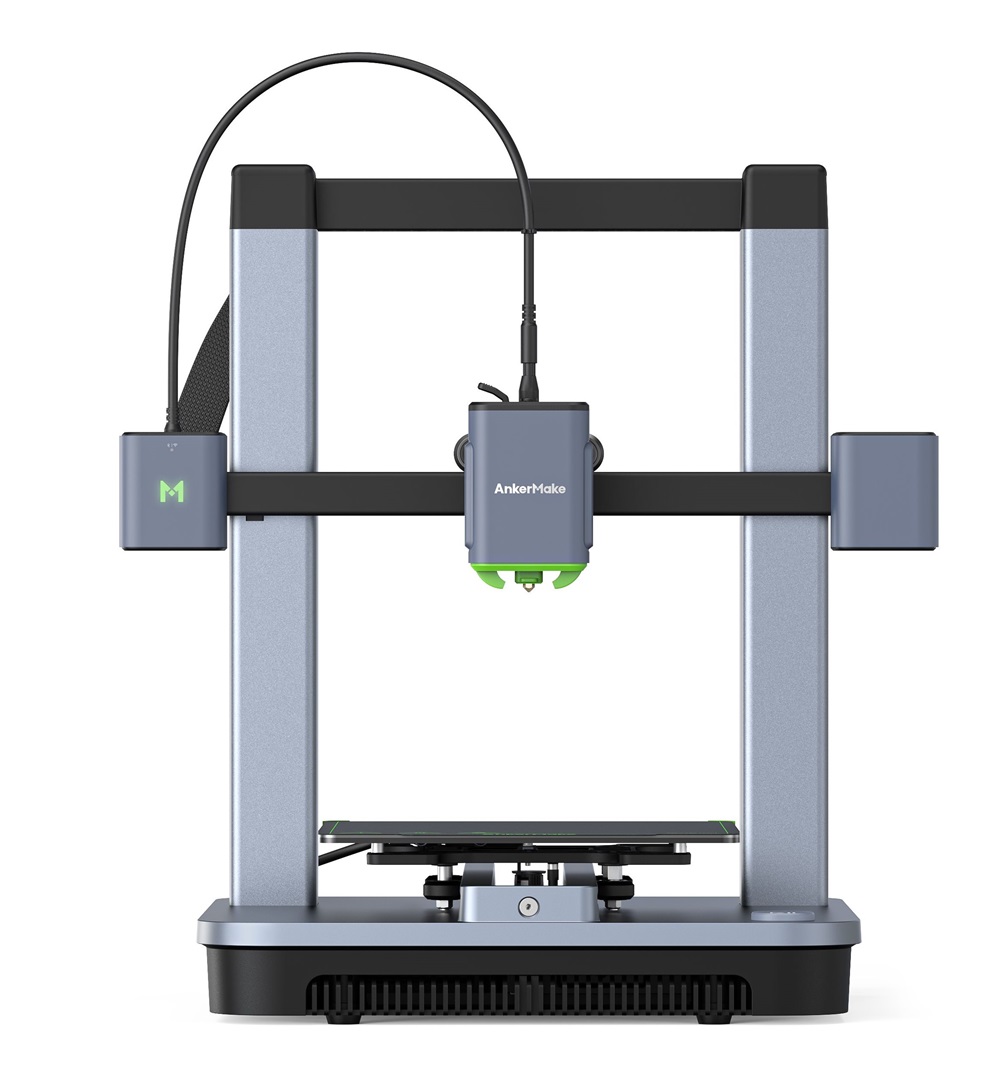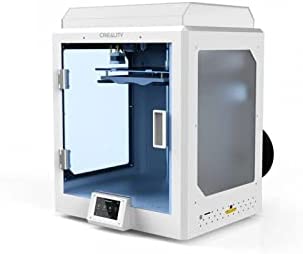Compare M5C vs CR5 PRO H
Comparison between the best 3D printers
Choose the best 3D printer at the best price. The cheapest 3D printers are here.
Buy a 3D printer here with 3D Fila.
 |
 |
|
| Model | M5C[BUY M5C] |
CR5 PRO H[BUY CR5 PRO H] |
| Printing Material | Filament | Filament |
| Buy Filament for AnkerMake M5C | Buy Filament forCreality 3D CR5 PRO H | |
| Estimated price | $399,00 | $1300,00 |
| Manufacturer | AnkerMake | Creality 3D |
| Release Year | 2023 | 2022 |
| Print Volume [mm] | 220x220x250 | 300x225x380 |
| Printer Size [mm] | 466x374x480 | 530x487x612 |
| Weight [kg] | 9,6 | 32,5 |
| Power Loss Recovery | YES | YES |
| Enclosed printer | NO | YES |
| Bed Leveling | Automatic | Automatic |
| Filament End Sensor | YES | YES |
| Bed type | Heated | Heated |
| Power supply system | Direct Drive | Bowden |
| Standard nozzle | 0,4 | 0,4 |
| Maximum Nozzle Temperature [°C] | 300 | 300 |
| Maximum Bed Temperature [°C] | 100 | 100 |
| Maximum printing speed [mm/s] | 500 | 100 |
| Filament holder | YES | YES |
| Camera for supervision | NO | NO |
| Recommended filaments | PLA, PETG, TPU, ABS, PA, PLA-CF, PETG-CF, PA-CF | PLA, PETG, Tritan, Flex, ABS |
| Recommended slicers | AnkerMake Studio (macOS, Windows), Simplify3D, Ultimaker Cura, PrusaSlicer | Cura, Simplify, Slic3r, IdeaMaker |
| Maximum Resolution [mm] | 0,1 | 0,1 |
| Processor | ATMEGA 2560 | |
| Display | Display touchscreen 4,3'' | |
| Power Supply | 350 W | 110/220V / 350W |
| Connectivity | Wi-Fi, USB-C, Bluetooth | SD / USB |
| Operating systems | Windows, Linux e Macbook | Windows, Mac, Linux |
| Date of registration in the system | 2024-09-11 | 2022-11-04 |
| Release date | 2023 | 2022 |
| Extra features | The AnkerMake M5 printer stands out for its impressive print speed, reaching up to 500mm/s. It features AI print monitoring, an integrated camera for creating timelapses, auto-leveling bed with pressure sensor, direct extruder, flexible PEI-coated build plate, and Wi-Fi and USB-C connectivity. Assembly is quick and easy, and the printer is designed to deliver high print quality and ease of use. | The Creality CR-5 PRO H 3D Printer stands out with a high-temperature nozzle (up to 300°C), a 300 x 225 x 380mm print volume, and a closed chamber for thermal stability. It includes BLTouch auto-leveling, a carbon-crystal silica glass base for easy model grip and removal, a filament sensor, and a resume print function. It has a 4.3-inch touchscreen interface, quiet operation, an attractive design, and is pre-assembled, ideal for technical materials. |
| Support for multiple colors and materials (AMS and CFS) | NO | NO |
Notes * |
||
| Cost-benefit | 7 / 10 | 6 / 10 |
| Hardware | 2.8 / 10 | 3 / 10 |
| Tela | . | . |
| Print volume | 3 / 10 | 4 / 10 |
| Performance | 4 / 10 | 1 / 10 |
| [BUY M5C] | [BUY CR5 PRO H] |
Conclusion |
| When comparing the AnkerMake M5C and Creality 3D CR-5 PRO H, several key factors emerge that could influence a buyer's decision based on their specific needs and budget. The AnkerMake M5C is significantly more affordable, making it an attractive choice for hobbyists or those seeking an entry-level 3D printer. It offers impressive print speeds up to 500 mm/s, automatic bed leveling, and a direct drive system, enhancing usability and print quality. While it has a smaller print volume and lacks an enclosed build chamber, its ease of assembly and connectivity options make it a convenient option for quick and versatile printing. On the other hand, the Creality CR-5 PRO H justifies its higher price with a larger print volume and an enclosed design that provides better thermal stability for printing with various technical materials. Its features, such as the BLTouch auto-leveling sensor and carbon-crystal silica glass base, cater to users who require higher precision and are looking to produce more complex prints. In summary, the choice between these two 3D printers hinges on the buyer's priorities. If cost-effectiveness, speed, and ease of use are paramount, the AnkerMake M5C stands out as the better option. Conversely, for users who need enhanced build quality, larger printing capabilities, and don't mind the higher price tag, the Creality CR-5 PRO H may be worth the investment. Ultimately, each printer serves distinct market segments, thereby accommodating a range of 3D printing enthusiasts. |

